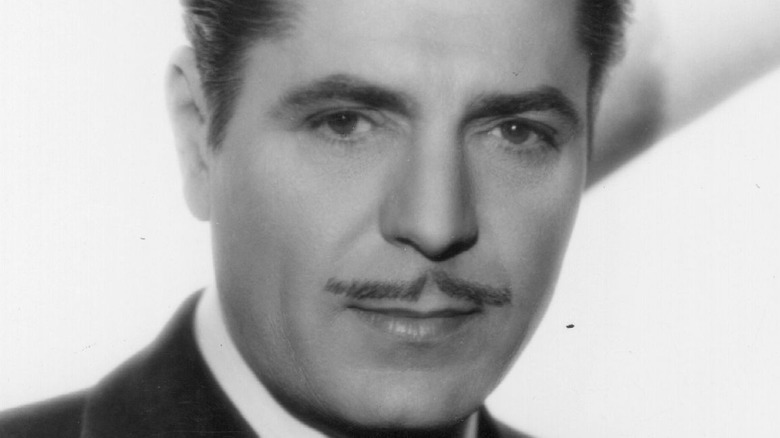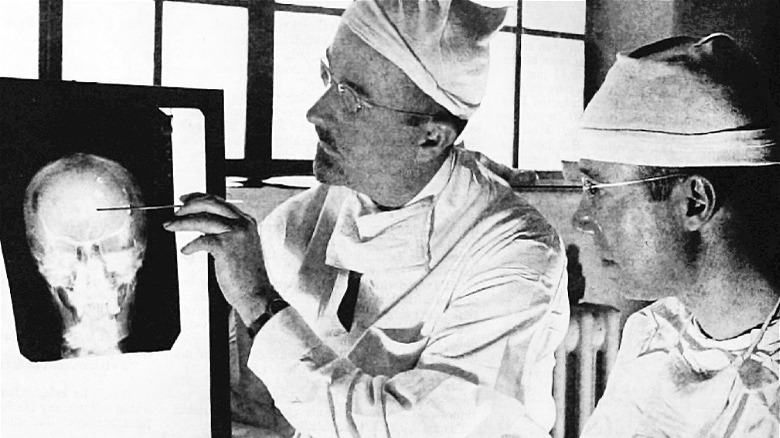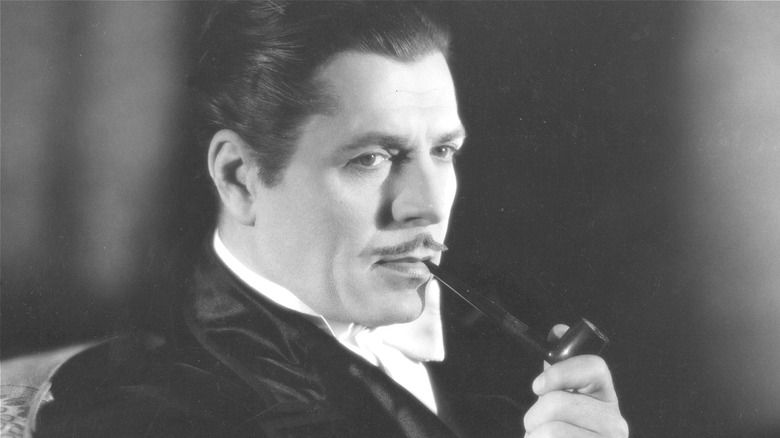Why Warner Baxter, The Second Ever Best Actor Oscar Winner, Decided To Get A Lobotomy
When it comes to the A-list actors and actresses of Hollywood, it is often easy to forget that they are not who or what they portray on the big screen. Christopher Reeve was not Superman, Sean Connery was not James Bond, and Harrison Ford is not Indiana Jones. Though they were not the characters they played, they are paid to make viewers believe that they are almost superhuman in their capabilities. Though we as consumers may forget that the stars we watch are people, their lives outside of cinema oftentimes can remind us that they are mortal like the rest of us.
One of the silver screen giants of old Hollywood was Warner Baxter. He starred in many films and won the Academy Award for best actor for his role in a motion picture called "In Old Arizona" (per History Collection), the second actor so honored. By the mid 1930s he was one of the most sought-after actors in Hollywood, but over the next decade his career declined due to his deteriorating health. In order to find relief, he turned to a popular but brutal medical technique of the time.
What is a lobotomy?
The procedure known as a lobotomy dates back to the late 19th century (per Medical News Today). During this time period psychotherapy was new and there were no drugs available that could treat mental illness, and so the lobotomy was invented. The actual procedure is a type of brain surgery that involves severing the connections between the frontal lobe and the other parts of the brain. Breaking these connections was important due to the many functions that the frontal lobe contributes to, including cognitive capabilities and voluntary movement.
Though this method of treatment for mental health issues seems brutal to us today, lobotomies became not only common, but popular. According to Medical News Today, thousands of patients underwent this procedure in an attempt to treat mental illness. Some of the most common disorders it was used for included schizophrenia and intellectual impairments. Additionally, lobotomies were also used on some occasions to treat physical ailments as well, which is what Baxter was suffering from.
Chronic pain drove Baxter to drastic action
During the 1940s, Baxter's movie career took a dive; he had developed arthritis that caused him constant pain (per History Collection). At this time there were not very many remedies available that could help ease pain of this magnitude, though the most common pain killers were heavy opiates like morphine or heroin. Baxter reportedly tried every kind of treatment available, including some that were considered "quack cures," to no avail. As a last-ditch effort, he decided to get a lobotomy, despite his doctor's warnings.
In 1951, Baxter underwent a completely voluntary transorbital lobotomy. Initially it appeared as if maybe it had worked, due to the fact that he was no longer complaining about his pain. As time passed, however, it became more clear that Baxter was actually in a semi-catatonic state and almost completely detached from the world around him. He also lost his memory and was unable to recognize those closest to him. Baxter started having seizures and convulsions as well, which had not been among his health issues before the operation. A few months after the surgery, Baxter died of pneumonia — probably not because of the lobotomy, but because of his post-surgical care. He was 62 years old.


